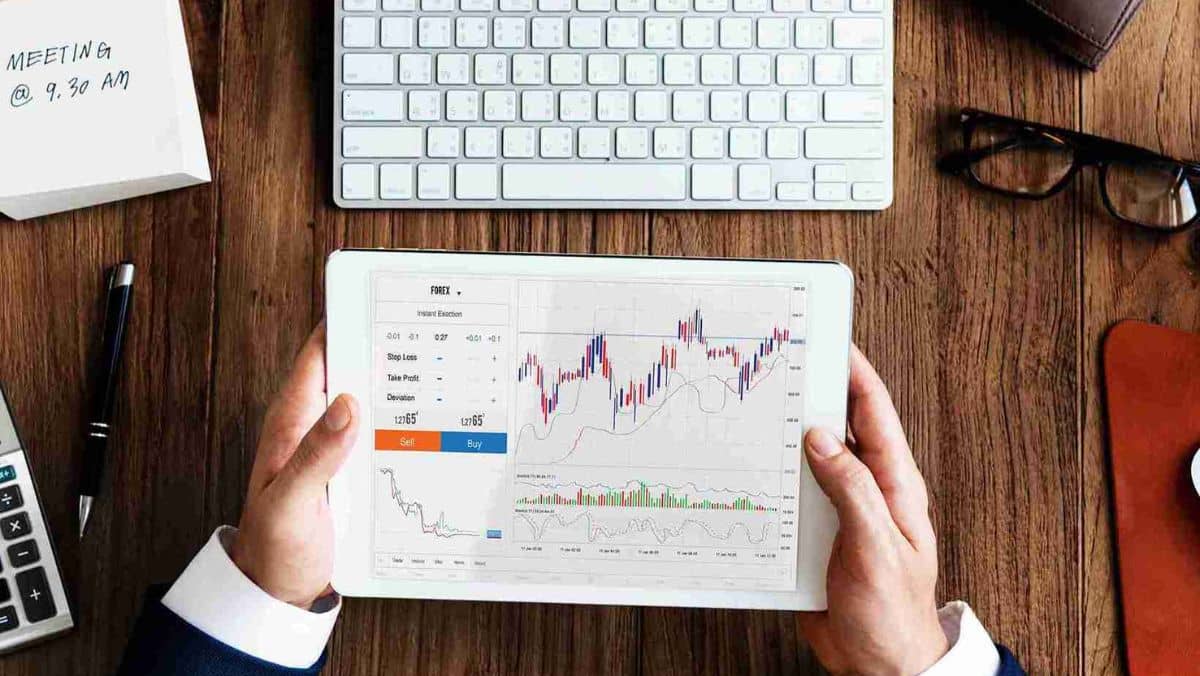
Friday Feb 9 2024 03:03

10 min

Trading stocks, futures, forex, or any financial market can be risky. Proper strategy development and testing are crucial before putting real money on the line. Fortunately, there is a way to test your strategy to lessen the risk of the market - the power of paper trading.
In this article, we’ll explore the benefits of paper trading and how to make the most of it when testing your trading setups.
Paper trading, also known as virtual trading, allows you to simulate trading strategies without risking real money. It works by allowing you to trade with virtual currency rather than actual cash.
The idea is to trade as if you were using real money to determine if your trading plans are viable before putting your capital on the line.
With paper trading, you can practice executing trades using historical or real-time market data. As your virtual trades are placed, paper trading platforms will simulate fills as if you were trading live.
You’ll then be able to track the performance of your trades over time as you would with a live account.
The main advantage is that you can try out new trading indicators, automated systems, and overall strategies without the risk of losing money. You can experiment freely without fear.

Backtesting strategies with historical data and real-time paper trading can help you gain confidence in your system’s performance. Knowing a strategy works well under simulated conditions can bolster your belief in it.
When paper trading, you can take your time honing your chart reading skills, order entry habits, and strategy rules. The stress of having real capital at risk is removed.
Paper trading provides important statistical data, like net profitability, drawdowns, win percentage, risk/reward ratios, etc. Based on simulated performance, you can evaluate if a strategy is worth pursuing further.
Every strategy has flaws and limitations. Paper trading allows you to discover where a strategy underperforms so you can work to improve it or only apply it in optimal conditions.
Even with simulated trades, paper trading can help you master your emotions and stick to plans. The trading psychology lessons learned will carry over to live trading.
Overall, paper trading takes the pressure off so you can objectively judge strategies before putting money on the line. It provides an efficient way to test and refine your trading approach.
One of the top uses of paper trading is testing new technical indicators on their own or as part of a broader trading system.
Backtest the indicator - First, optimize indicator settings and signals using historical price data. Then, determine entry rules, exit rules, position size rules, and appropriate market conditions for the indicator.
Add other confirming indicators - Improve signal accuracy by adding secondary indicators that confirm when to enter and exit positions. For example, combine Relative Strength Index (RSI) with stochastic for exits.
Use price action for confirmation - Don’t take trades purely based on the indicator. Look for the indicator signal to align with candlestick patterns for confirmation.
Refine entry/exit timing - Use paper trades to refine exactly when you enter and exit positions to maximize gains based on the indicator signals. You may need to tweak the timing.
Gauge predictive value - Look at the simulated trading records to determine if the indicator consistently provides signals before major price movements. Can signals be trusted?
Assess risk/reward - Paper trade for long enough to determine the average reward on winning trades versus the average loss on losing trades signalled by the indicator.
Calculate overall performance - Analyze total profitability, win percentage, Sharpe ratio, and drawdown to determine if the indicator works well before using real money.
Simply paper trading new indicators can reveal strengths and weaknesses that may not be apparent through backtesting history alone. It can also build conviction in using the right indicators for your strategies.

Another prime use of paper trading is testing automated trading systems before launching them with real capital.
Detailed paper trading can confirm that automated trading systems execute trades consistently and profitably according to their coded strategy rules. Thus, you can proceed confidently.
Paper trading provides an invaluable opportunity for traders to test and refine trading strategies without risking real capital.
The benefits of paper trading include practising executing trades in a realistic market environment, gaining confidence in new indicators and systems, uncovering potential weaknesses, and avoiding costly mistakes.
Paper trading is essential for any trader serious about developing skills and evaluating strategies properly before going live. The small time investment needed to paper trade can save you significant money in the long run by helping prevent losses from underdeveloped approaches.
Don’t put your hard-earned trading capital at unnecessary risk. Follow the advice in this article and use paper trading to validate your strategies first.
Learn and trade with markets.com: The ultimate trading community!
“When considering “CFDs” for trading and price predictions, remember that trading CFDs involves a significant risk and could result in capital loss. Past performance is not indicative of any future results. This information is provided for informative purposes only and should not be considered investment advice.”
